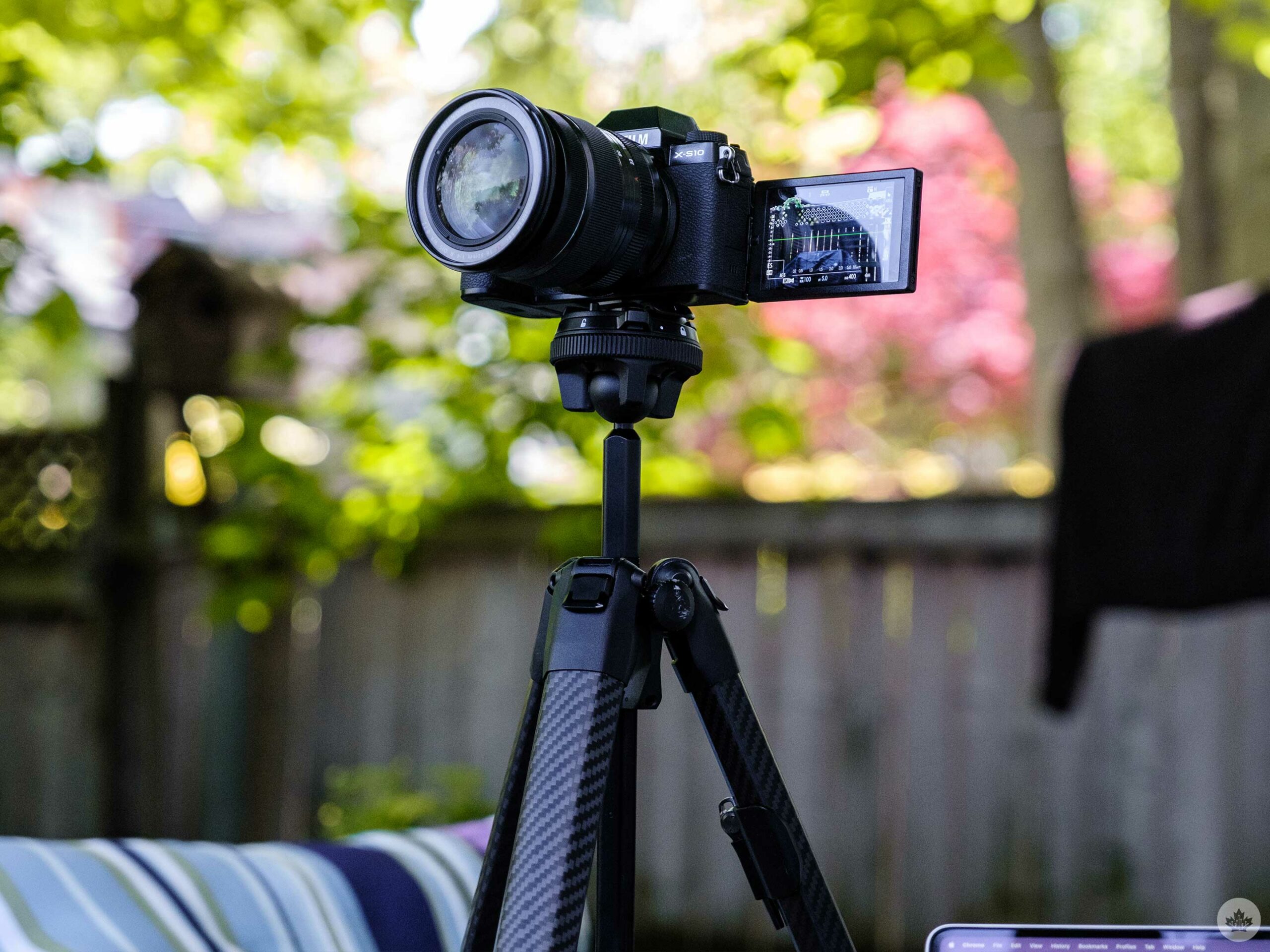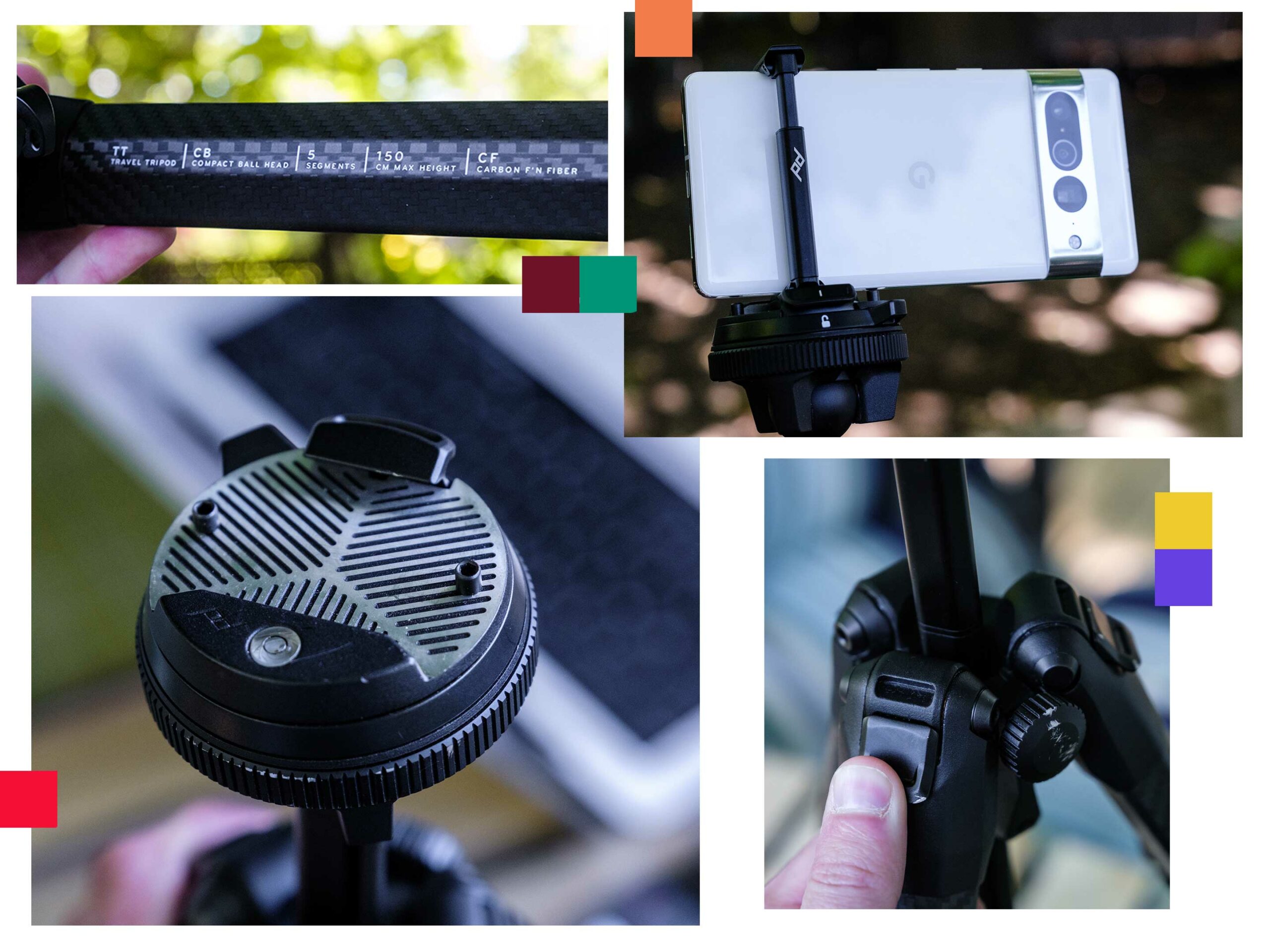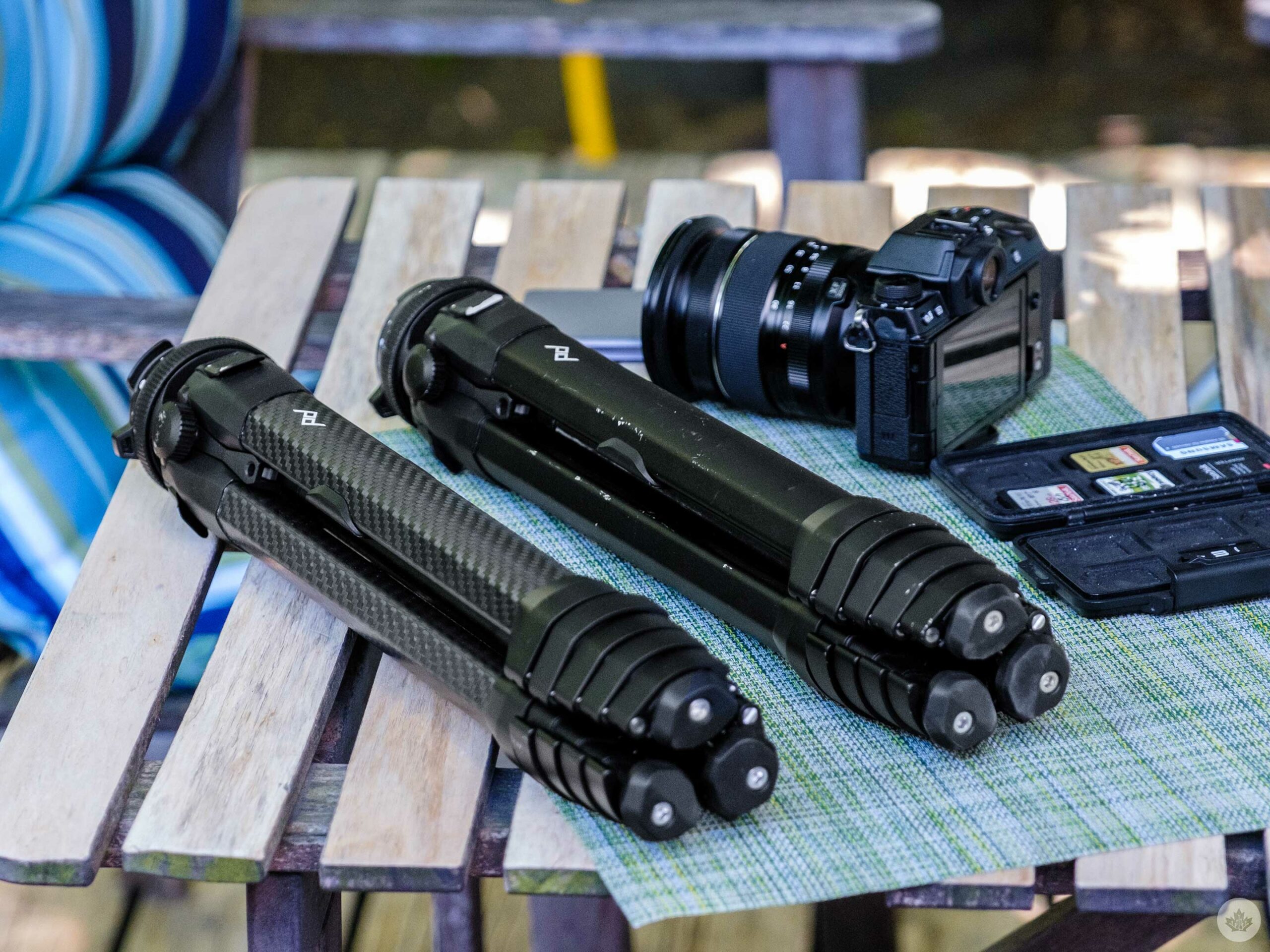
I’ve been testing Peak Design’s Carbon Fibre Travel Tripod for a few months now, and while it may seem like a menial change next to the Aluminum model, the reduction in weight makes walking around with a backpack full of camera gear much more manageable.
That said, the tripod’s expensive cost does weigh on my conscience.
When I first started taking photos and videos more seriously, my partner gifted me the Aluminum Travel Tripod for Christmas, and I loved it. The compact size fits into my camera bag, is quick to set up, and is versatile enough for 99 percent of the work I need. However, after a couple of years of dragging that tripod around North America, I craved something lighter.
It seems like a no-brainer to jump from the Aluminum version to the Carbon Fibre option since they look the same and offer an identical feature set. Unfortunately, the price is a bit of a hurdle. The Aluminum version rings in at $500, and the Carbon Fibre costs $879, which rounds up to $1,000 in Canada.
This is a lot of money to pay for a slightly lighter tripod, making it primarily worth it to people who travel. When you do the math, there’s a 0.63-pound difference between them. It doesn’t seem like much, but over time, that adds up. I’ve walked to work with both, and the Carbon fibre option felt less noticeable on my back. Plus, having the option of throwing an ultralight kit together for a day trip instantly becomes much more feasible when you don’t have to worry about the nuisance of lugging around a huge tripod all day. I’ve even seen Shevon Salmon holding his camera on this tripod like a giant selfie stick since it’s so easy to carry.
If you’re a small crew that travels a lot, I think this tripod is perfect. I worry about its longevity over time since carbon fibre isn’t as strong as aluminum. Still, if that’s something you’re concerned about, the tripod comes with a nice soft case for transporting it around, which should keep it safe. There’s also a lifetime warranty on both tripod versions, and you can look into what it covers here.
Other features

Beyond being extremely compact when folded down, a few other perks come with Peak Design tripods.
First, it uses a ball head that is really easy to move and can even rotate a full 90 degrees so you can film/shoot vertical content. You can even take out the centre post and flip it around to film stuff upside down and get low angles. These features aren’t exclusive to Peak Design, but they’re implemented smartly here, and the intuitiveness of the tripods locks and dials makes it reasonably fast to swap your setup around.

A few close-ups on the tripod, plus a shot of the included phone mount.
One of the cooler exclusive features is the addition of a built-in phone mount. If you twist the hook on the bottom of the tripod, you can pull it out, and a small metal Phone mount slides out. It’s incredibly minimal, but in a pinch, it’s excellent, and the fact that it’s integrated into the tripod is fantastic and has saved me a few times.
There’s a small plastic Allen key holder on the side of the tripod, but in my experience, it’s very easy to lose. If you keep the tripod in its small carrying case all the time, you’d run a negligible risk of this, but I wouldn’t recommend relying on it. The custom Allen key offers two hex bits for attaching the tripod plate to your camera and changing the orientation of the tripod. I was able to keep my original key with my aluminum tripod for around eight months, but on a trip last year, it got lost, and I refuse to spend $30 plus shipping to replace it. I’d love to see Peak Design re-engineer the holder so the key can’t fall out, but until then, I’ll stick with a regular camera multi-tool.

Keeping an Allen wrench on the leg of your tripod is super convenient, but it’s also easy to get lost.
As I mentioned above, the tripod comes with a soft case, but it does add some more bulk. Since I’m using this tripod to slim down my camera bag, I opt not to use the case, which does mean my tripod does get scraped up a bit more in my bag or when it’s strapped to the outside. I’ve lived this way with both tripods, and beyond a few scratches, both have held up well to the abuse.
That said, I did accidentally drop the aluminum model onto a tile floor the other day from about waist height, and one of the clips that adjusts the legs angle snapped. It still works, but the thumbpad that makes it easy to push is mostly gone.
The tripod for you?

At its maximum height of 152cm (60 inches), the tripod is just a little shorter than me. I’m six feet tall with Crocs on.
At the end of the day, I love this tripod, but I’d only recommend it to people with a lot of disposable income or content creators who frequently travel and need a reliably light tripod to follow them around.
Anyone that looks at photography/videography as a hobby might want to stay away from the Carbon Fibre Travel Tripod, but splurging on the aluminum model will still get you most of the perks of the tripod without having to spend an arm and a leg. Videographers that want to use a smooth panning head will also want to stay away since the Peak Design tripods are built to capture static shots without camera movement.
As someone who used the Aluminum model for years, I wish I had just stepped up and bought the Carbon Fibre option years ago since I do travel so much, but I will say that I never felt like the heavier tripod held me back from getting work done, I just felt it on my back at the end of a long day.
You can look into Peak Design’s tripods here.
MobileSyrup may earn a commission from purchases made via our links, which helps fund the journalism we provide free on our website. These links do not influence our editorial content. Support us here.



